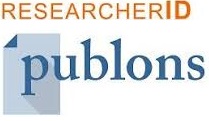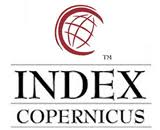Is It Necessary To Implement ERP In Mechanical Electrical Contractor Companies?
Abstract
Keywords
Full Text:
PDFReferences
A. Al-Okaily, M. Al-Okaily, F. Shiyyab, and W. Masadah, “Accounting information system effectiveness from an organizational perspective,” Manag. Sci. Lett., vol. 10, no. 16, pp. 3991–4000, 2020, doi: 10.5267/j.msl.2020.7.010.
P. J. ( Romney, M. B., & Steinbart, Accounting Information Systems Thirteenth Edition. United States of America: : Pearson Education, Inc, 2015.
V. Bawimbang, L. Tanor, and H. L. Suot, “Analisis Sistem Informasi Akuntansi Penjualan Pada PT Daya Anugerah Mandiri Manado,” J. Akunt. Manad., vol. 1, no. 3, pp. 17–21, 2021, doi: 10.53682/jaim.v1i3.527.
S. Darudiato and E. C. Sari, “Pengembangan Sistem Informasi Akuntansi PT. Surya Warfa Kharisma,” ComTech, vol. 2, no. 1, pp. 60–71, 2011, [Online]. Available: https://research.binus.ac.id/publication/20276278-B5FD-4EA8-B084-49BB89A1B45F/pengembangan-sistem-informasi-akuntansi-pt-surya-warfa-kharisma-studi-kasus-penjulan-piutang-dan-penerimaan-kas/
Supriyati and R. S. Bahri, “Model Design of Accounting Information Systems for Village Owned Enterprises (BUMDes),” IOP Conf. Ser. Mater. Sci. Eng., vol. 879, no. 1, 2020, doi: 10.1088/1757-899X/879/1/012093.
E. F. Brigham and M. C. Ehrhardt, Financial Management: Theory & Practice. Cengage Learning, 2013.
W. I. Ervianto, Manajemen Proyek Konstruksi, Edisi Pertama. Yogyakarta: Salemba Empat, 2002.
L. Karmila and L. Rahmazaniati, “Analisis sistem informasi akuntansi pengeluaran kas pada Bappeda Kabupaten Aceh Barat,” J. Pendidik. Dan Konseling, vol. 4, no. 5, pp. 5166–5172, 2022, doi: https://doi.org/10.31004/jpdk.v4i5.7468.
W. Walidin, Saifullah, and T. ZA, Metodologi Q Kualitatif Dan Grounded Theory, 1st ed., vol. 1. Banda Aceh: FTK Ar-Raniry Press, 2015.
D. Sugiyono, Metode penelitian kuatintatif , kualitatif dan R & D / Sugiyono. 2018.
A. Anggito and J. Setiawan, Metode Penelitian Kualitatif. Sukabumi: CV Jejak, 2018.
M. Hennink, I. Hutter, and A. Bailey, Qualitative Research Methods, 2nd ed. London: SAGE, 2020.
C. Botezatu, I. Condrea, B. Oroian, A. Hriţuc, M. Eţcu, and L. Slǎtineanu, “Use of the Ishikawa diagram in the investigation of some industrial processes,” in IOP Conference Series: Materials Science and Engineering, 2019, pp. 1–7. doi: 10.1088/1757-899X/682/1/012012.
I. K. Anaam, T. Hidayat, R. Y. Pranata, H. Abdullah, and A. Y. W. Putra, “Pengaruh Trend Otomasi Dalam Dunia Manufaktur dan Industri,” Vocat. Educ. Natl. Semin., vol. 1, no. 1, pp. 46–50, 2022, [Online]. Available: https://jurnal.untirta.ac.id/index.php/VENS Vocational
S. Fuadi and O. Candra, “Prototype Alat Penyiram Tanaman Otomatis dengan Sensor Kelembaban dan Suhu Berbasis Arduino,” JTEIN J. Tek. Elektro Indones., vol. 1, no. 1, pp. 21–25, 2020, doi: 10.24036/jtein.v1i1.12.
W. Widiati and D. Anggraini, “Implementasi Software Akuntansi Untuk Menghasilkan Laporan Keuangan Perusahaan Yang Tepat Waktu,” JUSTIKA J. Sist. Inf. Akunt., vol. 02, no. 1, pp. 27–30, 2022, doi: https://doi.org/10.31294/justika.v2i1.1408.
T. S. Wulan, P. W. Novika, E. Nurvianti, and F. A. Putra, “Impact of ERP System Implementation on Operational and Financial Efficiency in Manufacturing Industry Impact of ERP System Implementation on Operational and Financial Efficiency in Manufacturing Industry,” J. Econ. Educ. Entrep. Stud., vol. 5, no. 3, pp. 491–501, 2024, doi: 10.62794/je3s.v5i3.4328.
DOI: http://dx.doi.org/10.52155/ijpsat.v50.2.7240
Refbacks
Copyright (c) 2025 Mohamad Arief Setiawan

This work is licensed under a Creative Commons Attribution 4.0 International License.



















